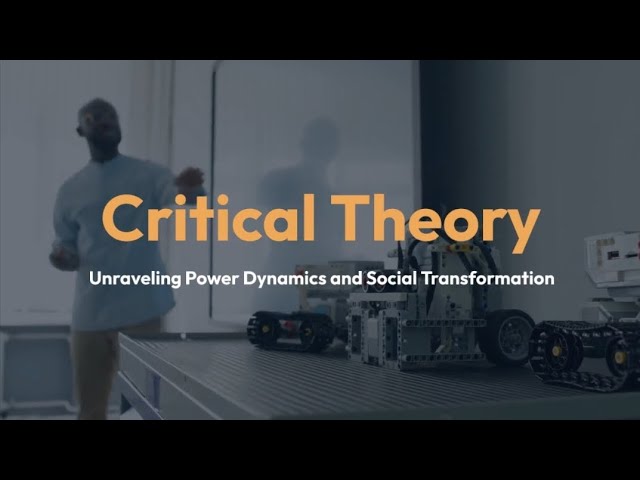Democracy in education means providing equal opportunities and participation to all individuals in the educational system. It ensures that decisions about policies, curriculum, and school administration involve collective input and consensus among students, parents, teachers, and community members.
In a democratic education system, everyone has a voice, and decisions are made through open dialogue and democratic processes rather than being dictated by a select few. This approach promotes inclusion, empowerment, and the development of critical thinking skills among students, preparing them to actively engage as citizens in a democratic society.
By recognizing the value of diverse perspectives and shared decision-making, democracy in education fosters a supportive and inclusive learning environment that prioritizes the needs and interests of all stakeholders.
Understanding Democracy In Education
Understanding Democracy in Education
Democracy in education refers to a system where decision-making is decentralized and power is shared among all stakeholders. It is an approach that emphasizes the importance of inclusivity, participation, and equality in educational processes.
Defining democracy in education is complex as it involves multiple dimensions. At its core, it promotes the idea that every individual has the right to be involved in decisions that affect their education. This includes students, teachers, parents, administrators, and the wider community.
The historical context and evolution of democratic practices in education can be traced back to influential thinkers such as John Dewey and Paulo Freire. Their works highlighted the need for active engagement, critical thinking, and a focus on social justice within educational settings.
This approach has evolved over time, with various models of democratic education emerging globally. These models vary in terms of their emphasis on student empowerment, community involvement, and the structure of decision-making processes.
Incorporating democracy in education fosters a sense of ownership, engagement, and responsibility among all stakeholders. It promotes a collaborative and inclusive learning environment that prepares individuals to actively participate in a democratic society.
The Role Of Power Dynamics In Education
The topic of power dynamics in education is a crucial aspect to understanding democracy in education. The relationship between educators and students plays a significant role in shaping the educational experience. Power dynamics between these two groups can determine the level of agency and participation students have in their own learning. When power is unevenly distributed, it can hinder students’ ability to voice their opinions and influence decision-making processes. This has implications for the development of curriculum and educational policies.
Power structures within education also impact curriculum development and the creation of educational policies. The curriculum reflects the values, beliefs, and priorities of those in power, which may not align with the needs and interests of the diverse student population. Similarly, educational policies are shaped by those in positions of authority, often without the direct input and involvement of students. These power dynamics can perpetuate inequalities and limit the democratic nature of education.
Advantages And Disadvantages Of Democracy In Education
htmlBenefits of democratic practices in education:
Encouraging student participation and engagement: Democracy in education empowers students to have a voice in decision-making processes. This fosters a sense of belonging and ownership, leading to greater engagement and motivation.
Fostering critical thinking and problem-solving skills: By involving students in decision-making, democratic practices encourage them to think critically, analyze different perspectives, and find creative solutions to problems.
Promoting inclusivity and diversity: Democracy in education recognizes the importance of inclusivity and diversity. It ensures that all students have equal opportunities to participate and contribute irrespective of their background or abilities.
Challenges and limitations of democracy in education:
Balancing student autonomy with the need for guidance: While democratic practices promote student autonomy, it is crucial to strike a balance between providing guidance and allowing students to make decisions. This ensures that they receive appropriate support and direction.
Addressing potential inequalities arising from student-led decision-making: In a democratic education system, there is a need to address potential inequalities that may arise due to students’ varying abilities, resources, or influence in decision-making processes.
Strategies For Implementing Democracy In Education
htmlStrategies for implementing democracy in education involve incorporating student voice and agency in the classroom, collaborative decision-making processes, empowering student leadership and autonomy, creating inclusive spaces for diverse perspectives and voices, cultivating an inclusive curriculum, emphasizing culturally responsive teaching practices, building strong educator-student relationships, establishing open communication channels, and fostering mutual respect and trust.
| Strategies for Implementing Democracy in Education |
|---|
| Incorporating student voice and agency in the classroom |
| Collaborative decision-making processes |
| Empowering student leadership and autonomy |
| Creating inclusive spaces for diverse perspectives and voices |
| Cultivating an inclusive curriculum |
| Emphasizing culturally responsive teaching practices |
| Building strong educator-student relationships |
| Establishing open communication channels |
| Fostering mutual respect and trust |
Case Studies: Successful Implementation Of Democracy In Education
Democracy in education is a powerful concept that fosters active student involvement and decision-making in schools and educational institutions. Successful case studies have demonstrated the effective implementation of democratic practices, allowing students to have a voice and influence in their learning environment. These institutions prioritize inclusivity, collaboration, and shared decision-making, empowering students to take ownership of their education.
By integrating democratic practices, schools create spaces for students to engage in thoughtful discussions, debates, and problem-solving activities. This approach helps develop critical thinking skills, encourages creativity, and promotes social responsibility. Students gain a deeper understanding of democratic values and principles, and they learn how to apply these concepts in their daily lives.
Moreover, the impact of democracy in education extends beyond the classroom. Research indicates that students educated in democratic environments are more engaged, exhibit higher levels of self-confidence, and are better equipped to participate in and contribute positively to society. They develop a strong sense of community and empathy, valuing diversity and fostering inclusive environments.
Overall, the successful implementation of democratic practices in education leads to positive outcomes for both students and society as a whole. By embracing democratic values, educational institutions contribute to creating a more empowered and democratic society.

Credit: theintercept.com
Overcoming Barriers To Democracy In Education
In the field of education, democracy plays a significant role in providing equal opportunities for all individuals to participate in decision-making processes and shaping the learning environment. Overcoming barriers to democracy in education requires addressing resistance and skepticism from traditional education systems. This can be achieved through fostering a culture of open dialogue and collaboration among educators, administrators, and students.
One way to overcome resistance is by providing resources and support for educators who are embracing democratic practices. This can include professional development opportunities, access to research and evidence-based strategies, and networking with like-minded educators.
Moreover, it is essential to create spaces for educators to share their successes and challenges in implementing democratic practices. This can be done through online platforms, conferences, and workshops focused on democratic education.
By addressing resistance and skepticism, and providing necessary resources and support, we can work towards a more democratic education system that empowers learners and cultivates active citizenship. Through collaboration and a commitment to democratic principles, we can create an inclusive and equitable learning environment for all.
Conclusion
Democracy in education fosters an inclusive and empowering environment where every voice counts. By involving students in decision-making processes and granting them autonomy, this approach cultivates critical thinking, collaborative skills, and a sense of ownership. With a responsive curriculum and participatory practices, democracy in education shapes engaged citizens and prepares them for the complexities of the real world.
It is an essential component of a holistic and progressive education system.







